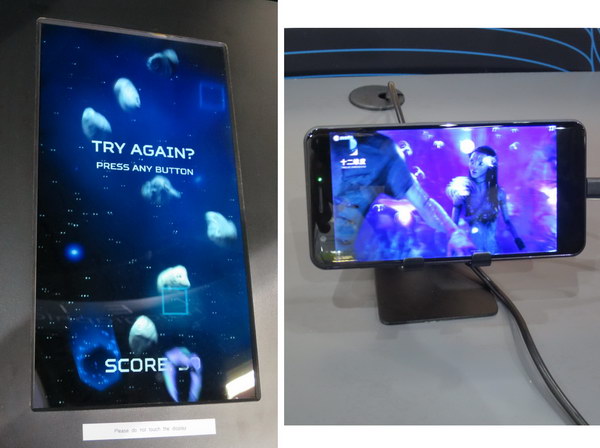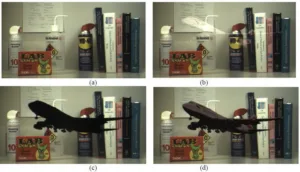Four of the five papers in Session 18 were also invited papers although, in general, they had a little more technical content than the papers in sessions 4 and 11.
In paper 18.1, eMagin gave an update on its 2k x 2k direct-patterned RGB OLED imager designed for NTE applications, especially for see-through AR applications. The main change from the design discussed at Display Week 2016 was a new silicon backplane optimized for the direct patterned OLEDs. An unusual feature of this backplane is that it can support a variety of RGB pixel layouts, as shown in the figure. This allows eMagin and the US Army, who provided some of the co-authors for the paper, to test different pixel arrangements and arrangements where blue was allocated more area than red or green. While eMagin only claimed a 5,000 cd/m² (nits) brightness for the full-color version of this microdisplay, they said they had achieved 60,000 cd/m² brightness on an all-green version of the display. I think in the future we can see higher color outputs from RGB OLEDs on this backplane. This imager was discussed briefly in eMagin’s presentation during the AR/VR business conference and was also shown on the exhibition floor.
![]() Examples of different 3 x 3 color pixel configurations supported by its new backplane (Image: eMagin)
Examples of different 3 x 3 color pixel configurations supported by its new backplane (Image: eMagin)
Paper 18.2 titled “Liquid Crystal Lenses in Augmented Reality” and presented by Yi-Hsin Lin from National Chiao Tung University discussed various designs of liquid crystal lenses where the optical focal length could be adjusted electrically. This would be one possible method to provide dynamic focus, as described in paper 4.3, as a solution to the vergence/accommodation problem. It also can solve the accommodation problems in AR systems.
Paper 18.3 was titled “A Switchable Light-Field Display for Mobile Applications” and was presented by Francesco Aieta of Leia. Inc. This design would allow electronic control of the angles at which light rays emerge from a backlight before passing through a LCD panel such as a cell phone display or laptop screen. This, in theory, would allow the cellphone display to act as a glasses-free 3D light field display or an ordinary 2D display. Another application Leia anticipates is as a privacy screen – all the light from a cell phone or laptop is directed toward the intended viewer and others just see a black screen. That’s an nteresting idea, if they can make it work. Since they were showing both large screen and smartphone sized versions on the exhibition floor, apparently they can.
 Light field displays from Leia on the exhibition floor. Left: Large screen used as a 3D video game. Right: Avatar on a smartphone. Both displays showed significant glasses-free depth. (Photo Credit: M. Brennesholtz)
Light field displays from Leia on the exhibition floor. Left: Large screen used as a 3D video game. Right: Avatar on a smartphone. Both displays showed significant glasses-free depth. (Photo Credit: M. Brennesholtz)
Paper 18.4 was titled “Digital Modulation on Micro Display and Spatial Light Modulator” and was given by Chen Wang and Ron Hsu of Jasper Display Corp. It described the use of a “Terminated Write Pointer” to improve the accuracy of the voltage applied to LC materials by backplanes that use digital rather than analog drive. It was really only of interest to people designing LC backplanes with digital drive.
Paper 18.5 was titled “A 1058-ppi 4K Ultrahigh-Resolution and High Aperture LCD with Transparent Pixels using OS/OC Technology” and was presented by Susumu Kawashima from Semiconductor Energy Laboratory Co. in Japan (which has often worked closely with Sharp in the past – Man. Ed.). The design used transparent oxide semiconductors (OS) and oxide conductors (OC) in a transmissive LCD. Since they were transparent, they allowed a higher aperture ratio than would have been possible with opaque materials. Again, this paper is primarily of interest to specialists.

